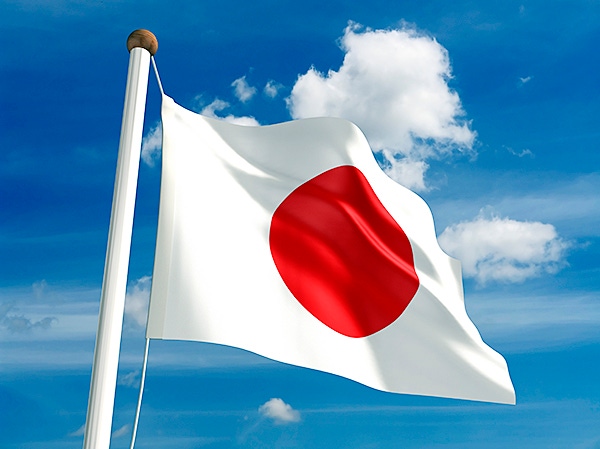More TPP pork trade details announced
Main impact will be in Japan, Vietnam
October 19, 2015

On Oct. 5, trade ministers from the 12 participating Trans-Pacific Partnership countries – the United States, Australia, Brunei Darussalam, Canada, Chile, Japan, Malaysia, Mexico, New Zealand, Peru, Singapore and Vietnam – announced a successful conclusion to their negotiations. The full text of the TPP agreement will not be available for public review until later this month or early November, but some of its agricultural trade provisions have been released by the USDA and the Office of the U.S. Trade Representative.
The following is a U.S. Meat Export Federation summary of the preliminary details related to U.S. pork trade.
Existing FTAs cover much of the TPP region
The United States already has free trade agreements with Canada, Mexico, Australia, Peru, Chile and Singapore, and duties on U.S. pork entering New Zealand and Malaysia are already zero. So in terms of market access, the biggest potential gains for U.S. pork under the TPP are in Japan and Vietnam.
For pork entering Japan ...
Although Japan’s longstanding “gate price” system for chilled/frozen pork cuts is not eliminated, the ad valorem duty will be removed and the maximum price for product entering below the gate price will be phased down over 10 years – from 482 yen per kilogram to 125 yen per kilogram in year 1, then to 50 yen per kilogram by year 10. Japan’s current 4.3% tariff on chilled/frozen cuts will drop by nearly half the first year, with the remaining duty eliminated in 11 years. Japan will maintain import safeguards on these cuts, but the safeguards allow for import growth. Last year Japan’s chilled/frozen pork imports from the United States totaled 276,033 metric tons valued at $1.48 billion.
Another significant aspect of the agreement is that Japan’s duties on all processed pork products will be phased to zero. Within six years, Japan will eliminate the 20% duty on ground seasoned pork and other processed pork products not covered by the ham and bacon gate price. A 10% duty on sausages will also be eliminated over the same period. Last year Japan’s imports of U.S. ground seasoned pork totaled nearly 100,000 mt, valued at more than $350 million. Imports of other processed U.S. products excluding ham, bacon and sausages were nearly 20,000 mt, valued at more than $100 million. Imports of U.S. sausages were 10,700 mt, valued at nearly $60 million.
A gate price will also remain in place for ham and bacon, but duties will be eliminated over 10 years and a safeguard mechanism, which allows for market expansion, will terminate in year 12. Japan’s annual imports of U.S. ham and bacon have been less than 2,500 mt, due in part to high tariffs, so the USMEF expects growth in this value-added category.
For pork entering Vietnam ...
Vietnam will eliminate tariffs on pork products, currently ranging up to 34%, in five to 10 years. Tariffs on frozen cuts (currently 15%), and preserved pork are eliminated in eight years. The 25% duty on chilled cuts will be eliminated in nine years, and tariffs on chilled and frozen carcasses in 10 years. An 8% duty on frozen offal will also be phased to zero.
Vietnam is highly self-sufficient in pork production and has a history of imposing restrictive import regulations. Despite this, the USMEF sees near-term opportunities for offal exports to Vietnam, with future growth for muscle cuts as the consumer market develops. Last year, U.S. pork and pork variety meat exports to Vietnam totaled just 992 mt valued at $2.2 million, but these totals have already been surpassed in the first eight months of 2015 (1,029 mt valued at $2.6 million).
Notes on other TPP markets
Nearly all of Malaysia’s duties on pork and pork products are already zero, but will be locked-in at zero under the TPP. Malaysia will also eliminate tariffs for pork carcasses in 15 years.
Access for U.S. pork entering Australia is currently limited to processed products and fresh/frozen pork shipped directly to an approved cooking facility for further processing. New Zealand has similar restrictions in place, but recently opened the market to fresh/frozen U.S. pork in retail-ready packages of less than 3 kilograms. While the United States continues to seek better access to these markets, immediate relief from these restrictions is not included in the TPP.
The United States will eliminate tariffs on imported pork and pork products, which are currently as high as 6.4%, in five to 10 years. This should not have a significant impact on U.S. imports, because imports from Canada, Mexico and Chile are already duty-free. The other significant supplier of imported pork is the European Union, which is not a part of the TPP.
Commitment to market development remains critical
While the USMEF’s preliminary analysis suggests the TPP will eventually lead to lower consumer prices for U.S. pork in Japan and Vietnam, capitalizing on these opportunities still requires a strong commitment to market development.
“The TPP’s tariff reductions are very significant, because Vietnam is a highly price-sensitive market and Japan is the most intensely competitive pork market in the world,” says USMEF President and CEO Philip Seng. “But market access gains alone do not ensure that our exports to these countries will increase. Most of our leading competitors are also in the TPP, and the EU is in the final stages of FTA negotiations with Japan and is already moving forward with an FTA in Vietnam. The U.S. industry must continue to develop business relationships in these markets and aggressively promote U.S. pork, or our market share will be at risk.�”
Implementation timing for the TPP remains uncertain, as the agreement must be ratified by the governments of the participating countries, each subject to its own political process. Taking this into account, the agreement may not be implemented until 2018.
You May Also Like



